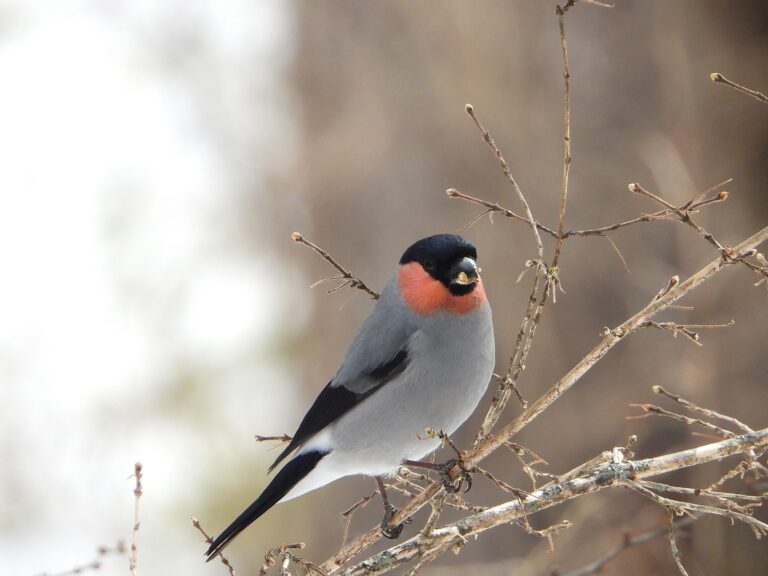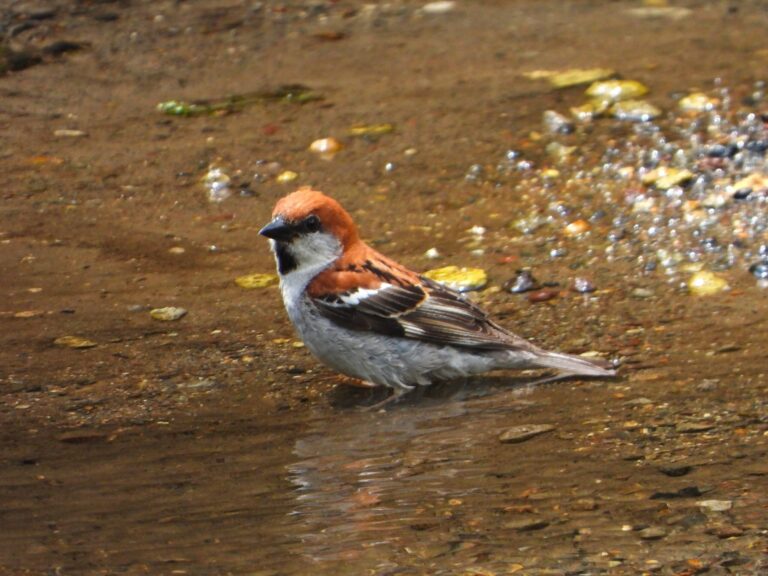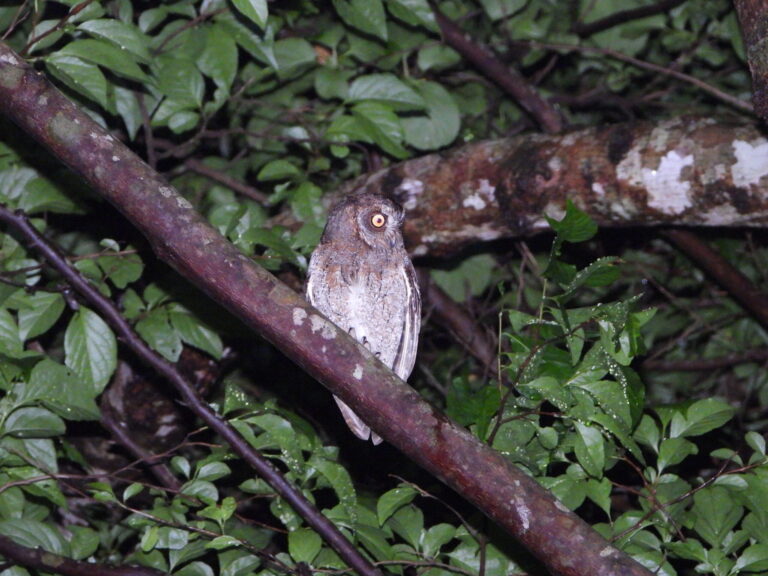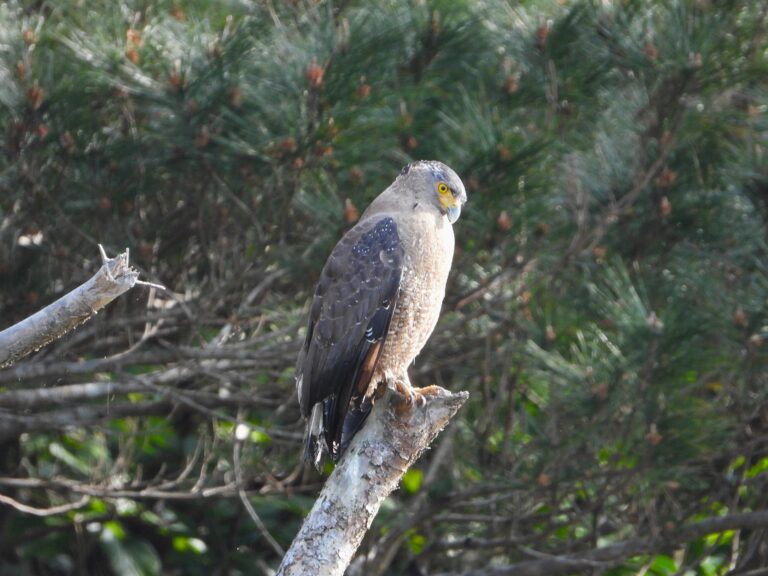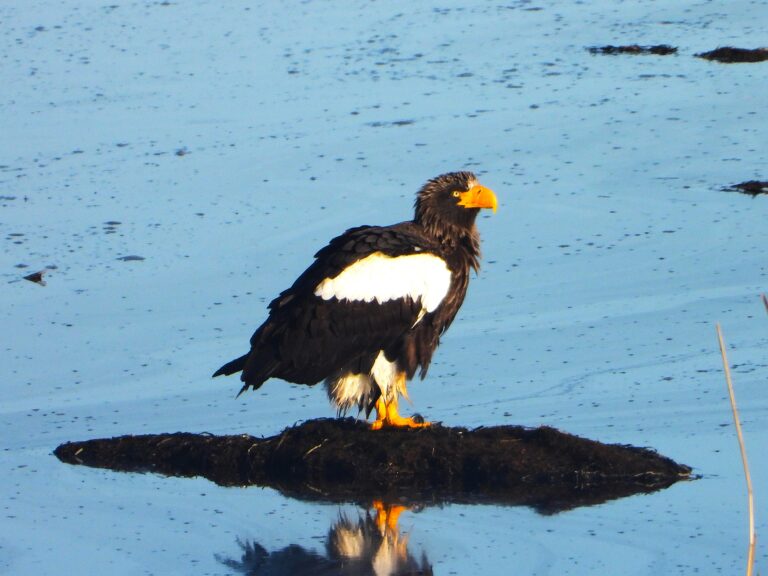Chestnut-eared Bunting (Emberiza fucata) – Wildlife of Japan
Introduction
The Chestnut-eared Bunting (Emberiza fucata) is a small bunting species in the family Emberizidae. It breeds widely across East Asia, including Japan, and is known for its soft yet clear song that echoes through grasslands and farmlands. In Japan, it represents one of the characteristic birds of open rural landscapes.
Appearance
This bird measures about 15–16 cm in length and weighs roughly 15–20 g. The male has a greyish crown, rufous ear-coverts (“chestnut ears”), and streaked brown upperparts. Underparts are buff with faint rufous on the breast and flanks. Females and non-breeding males are paler, with less distinct ear patches.
Habitat & Distribution
The species inhabits open habitats such as grasslands, riverbanks, and the edges of agricultural fields. It breeds mainly in Hokkaido, Honshu, and northern Kyushu, favoring upland fields and pastures with tall grasses. Northern populations migrate south for winter, reaching southern Japan, Taiwan, and parts of Southeast Asia.
Where to See in Japan
The Chestnut-eared Bunting can be observed in many rural and upland areas across Japan. In Hokkaido, it is found in open grasslands and agricultural zones such as the Tokachi and Kushiro regions. On Honshu, it breeds in highland grasslands including Nagano, Niigata, and Fukushima Prefectures, often in areas with Miscanthus or reed growth. During migration and winter, it may also appear in farmlands and riverbanks throughout western Japan. Early summer mornings in open plateaus are the best time to hear their song and spot them perched on tall grass stems.
Behavior
Males sing from tall grasses, reeds, or fence posts to mark territory and attract females. The song consists of a short, melodic trill followed by distinct ending notes. These buntings often forage on the ground, moving with short, bounding flights when disturbed. Migration begins in late September, with wintering individuals remaining until February in warmer regions.
Diet
The diet consists mainly of grass and weed seeds during autumn and winter. In the breeding season, they shift to insects and spiders to feed their chicks. Studies from Hyogo Prefecture confirm seasonal diet changes linked to breeding demands.
Reproduction
Breeding occurs from May to July in Japan. The nest is cup-shaped, placed on or near the ground among tall grasses. A clutch typically contains 4–5 eggs, incubated mostly by the female for about 12–13 days. Both parents feed the young, which fledge about 10 days after hatching.
Conservation
Globally, the Chestnut-eared Bunting is listed as Least Concern by the IUCN. In Japan, however, it faces local declines due to the loss of grassland habitat, agricultural changes, and pesticide use. Some prefectures, including Aichi and Niigata, classify it as “Endangered” or “Vulnerable” at the regional level.
Author’s Impression
From my own experience, the Chestnut-eared Bunting is often found in upland areas where tall grasses such as Miscanthus (Japanese silver grass) grow. These open highlands with a mix of reeds and wildflowers seem to be their favorite habitat. Their calm song echoing across the plateau perfectly matches the peaceful atmosphere of Japan’s countryside.


